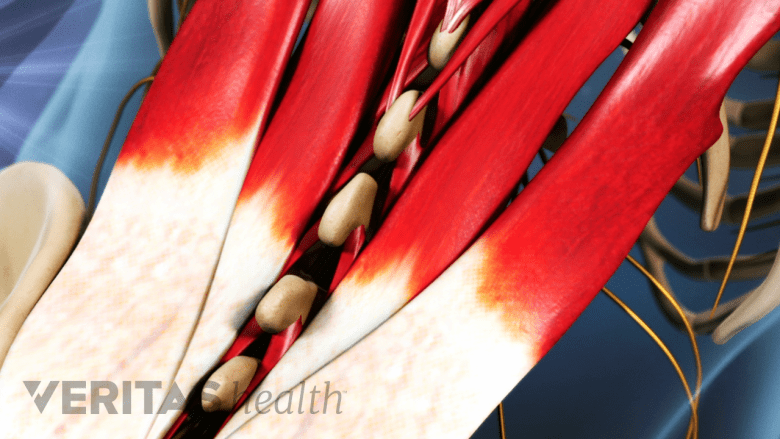Most episodes of low back pain are caused by damage to the soft tissues supporting the lower spine, including muscles, tendons, and ligaments.
The lower spine, also called the lumbar spine, depends on these soft tissues to help hold the body upright and support weight from the upper body. If put under too much stress, the low back muscles| or soft tissues can become injured and painful.
While a pulled back muscle or strain may seem like a minor injury, the resulting pain and muscle spasms can be surprisingly severe.
In This Article:
- Pulled Back Muscle and Lower Back Strain
- Lower Back Muscle Strain Symptoms
- Causes and Diagnosis of Lower Back Strain
- Pulled Back Muscle Treatment
- Exercises for Lower Back Muscle Strain
- Lower Back Strain Video
Types of Lower Back Strain
Overuse injuries can lead to tears in the muscle fibers.
There are two common types of soft tissue injuries in the low back:
- Muscle strain occurs when fibers in a muscle begin to tear from being overstretched or overused (commonly called a pulled muscle).
- Lumbar sprain occurs when ligaments are overstretched or torn. Ligaments are tough, fibrous tissues that connect bones together.
A specific diagnosis of ligament sprain or muscle strain is usually not needed, as both have almost identical symptoms and receive the same treatment.
Inflammation and Muscle Spasm
Inflamed muscles may spasm, feel tender, and contract, causing intense pain.
When soft tissues in the low back are stretched or torn, the surrounding area will typically become inflamed.
Inflammation, or local swelling, is part of the body’s natural response to injury, in which blood is rushed to an injured tissue in order to restore it. Inflamed muscles may spasm, feel tender to the touch, or cramp , and contract tightly, causing intense pain.
The Course of Lower Back Muscle Strain
An injury to the pelvic area may lead to pain and tightness lower back.
The hip, pelvis, buttock, and hamstring muscles assist low back muscles in supporting the lumbar spine. When these muscles are injured, pain or tightness may be felt across the low back and into the hips or buttocks.
Symptoms are typically limited in duration and follow a pattern:
- Pain is most intense for the initial few hours and days. It is normal to experience increased pain with certain movements or positions, such as bending forward, backward, or standing upright.
- Ongoing moderate pain and stiffness is usually felt for 1 to 2 weeks while muscles heal. Pain when holding certain movements (such as anything that jars the spine) or positions (such as standing for a long period), stiffness, and local tenderness are typical.
Compared to many other kinds of back injuries, a pulled muscle is usually straightforward to diagnose and easy to treat, and symptoms usually resolve within 4 to 6 weeks. Some severe muscle injuries, such as a complete muscle tear, can take months to heal.








